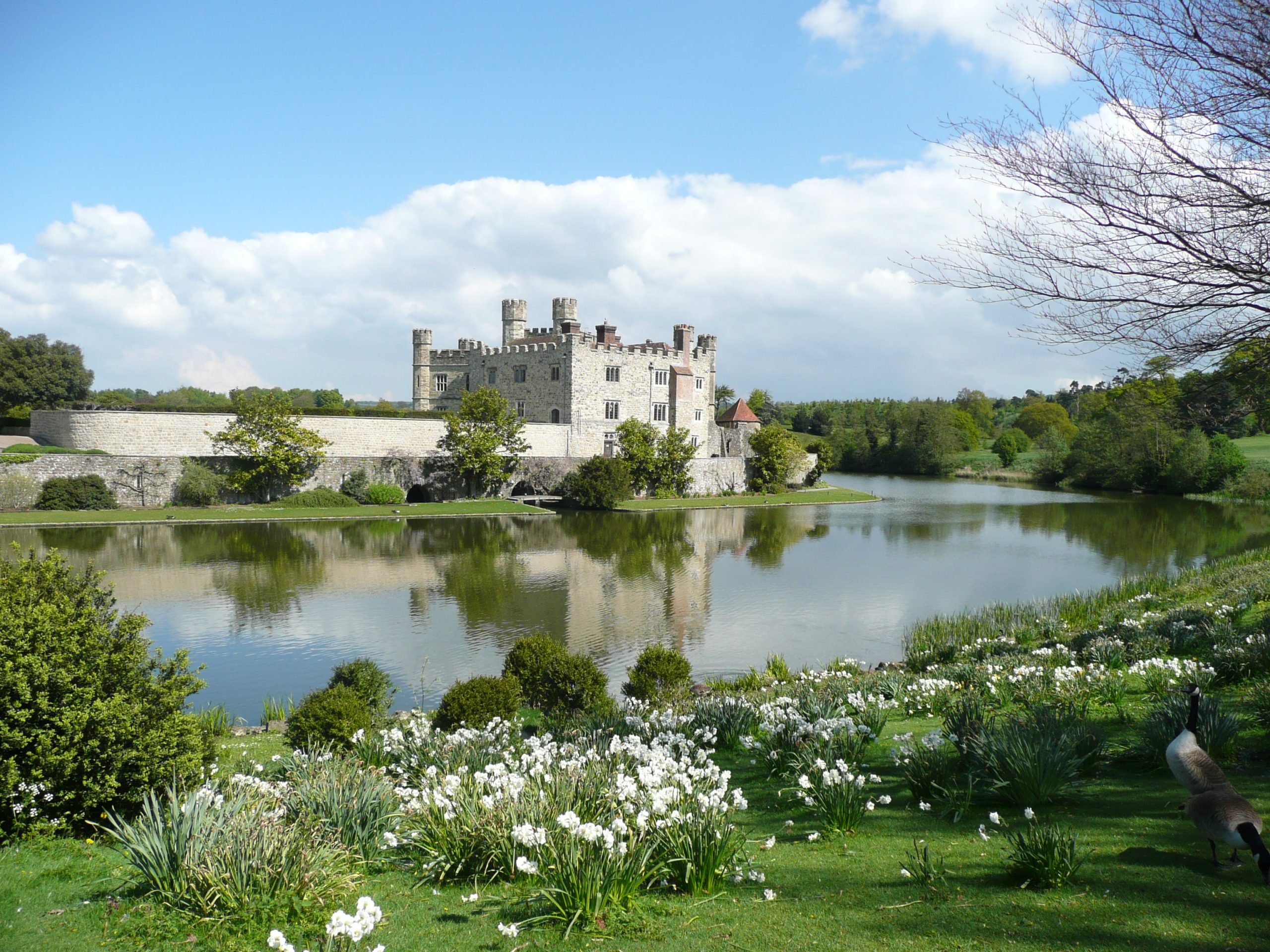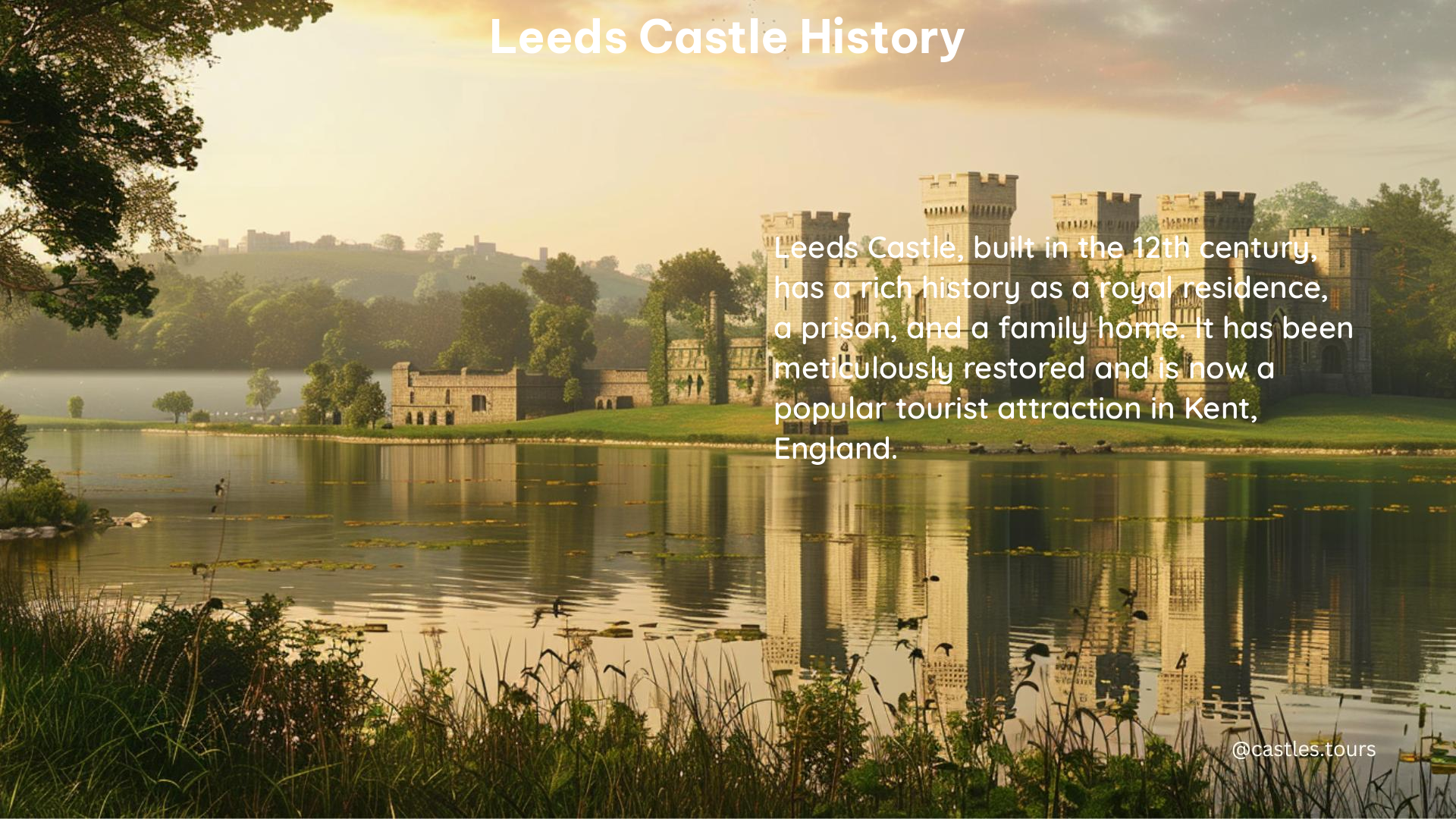Leeds Castle, nestled in the heart of Kent, England, boasts a rich and captivating history that spans over 900 years. From its humble beginnings as a Norman stronghold to its transformation into a royal palace and stately home, this enchanting castle has witnessed the ebb and flow of power, intrigue, and architectural evolution.
Early Foundations: The Norman Era

The first recorded owner of Leeds Castle was Robert de Crevecoeur, who constructed the castle around 1119 on two small islands in the River Len. This strategic location provided a natural defense against potential invaders, and the castle’s early years were marked by its role as a Norman stronghold.
The Barbican: A Unique Defensive Structure
During the reign of Edward I, the castle underwent significant enhancements, including the construction of the Barbican. This unique structure was divided into three parts, each with its own entrance, drawbridge, gateway, and portcullis, further strengthening the castle’s defenses.
Royal Ownership and Refinements

In 1278, the castle became a royal palace when King Edward I and his queen, Eleanor of Castile, acquired it. The royal couple made substantial improvements, including the addition of the Gloriette, glass windows, the Queen’s Baths, and a fortified mill.
Edward II and Queen Isabella: A Tumultuous Chapter
The castle’s royal connection continued in the early 14th century when King Edward II granted it to Bartholomew Badlesmere. However, when Queen Isabella sought refuge at the castle, she was denied entry and fired upon by archers. This led to Edward II besieging the castle, which he reclaimed within a week.
The Tudor Era and Beyond
The castle’s royal association continued during the Tudor period, with Henry VIII transforming it for his first wife, Catherine of Aragon. Later, the castle was granted to Sir Anthony St. Leger of Ulcombe, ending the royal connection.
Restoration and Preservation
In the mid-1600s, the castle was leased to the government and used to house French and Dutch prisoners. In the 20th century, the castle was purchased by Lady Olive Baillie, who undertook a comprehensive restoration, transforming it into a stately home. The castle was opened to the public in 1976, allowing visitors to experience its rich history and captivating beauty.
Leeds Castle Today
Today, Leeds Castle is known as “The Loveliest Castle in England” and is a popular tourist destination. Visitors can explore the castle’s grounds, which feature a maze, grotto, waterfowl, aviaries, and a vineyard, as well as various accommodations and activities.
Key Facts and Figures
- Cost: The cost of admission and events at the castle helps fund conservation work, but charitable donations are also encouraged.
- Timings: The castle is open daily from 10:00 AM to 6:00 PM, with last entry at 4:00 PM.
- Directory: Leeds Castle, Maidstone, Kent, ME17 1PL, UK.
- Hours: 10:00 AM – 6:00 PM (last entry at 4:00 PM).
- Rates: Varying rates for admission, accommodations, and activities.
- Value: The castle is valued for its historical significance and picturesque setting.
Leeds Castle’s captivating history, from its Norman origins to its royal connections and restoration, has made it a beloved and iconic landmark in the English countryside. Whether you’re a history enthusiast or simply seeking a picturesque day out, a visit to Leeds Castle is sure to leave a lasting impression.
References
- https://great-castles.com/leeds.html
- https://leeds-castle.com/experience/history-buffs/
- https://www.historic-uk.com/HistoryMagazine/DestinationsUK/Leeds-Castle/
- https://en.wikipedia.org/wiki/Leeds_Castle
- https://leeds-castle.com/her-castle/history-of-the-castle/
